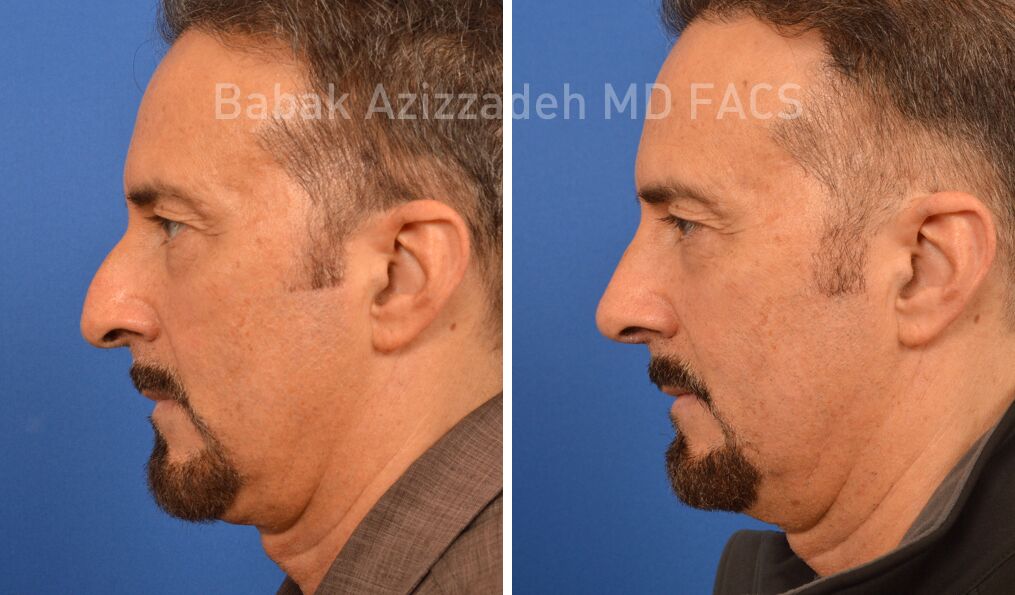The Facts About Rhinoplasty Austin Revealed
Table of ContentsThe 45-Second Trick For Rhinoplasty Surgery AustinNot known Facts About Rhinoplasty Surgery AustinAn Unbiased View of Rhinoplasty AustinAll about Rhinoplasty Austin
Ultrasonic nose surgery utilizes piezoelectric instruments (scrapers wears, saws) that affect just the bones and the stiff cartilages through ultrasonic vibrations, as the instruments used in oral surgery. The usage of piezoelectric instruments requires a more prolonged method than the isial one, permitting to picture the entire bony vault, to improve it with rhinosculpture or to activate and stabilize bones after regulated osteotomies.Typically, the plastic cosmetic surgeon initially separates the nasal skin and the soft tissues from the osseo-cartilagenous nasal structure, and after that reshapes them, stitches the cuts, and applies either an external or an internal stent, and tape, to incapacitate the newly reconstructed nose, therefore facilitate the recovery of the surgical cuts.

To tape-record the "before-and-after" physiognomies of the nose and the face of the client, the particular visual point of views needed are photos of the nose viewed from the anteroposterior (front-to-back) point of view; the lateral view (profiles), the worm's- eye view (from listed below), the bird's- eye view (overhead), and three-quarter-profile views. Photo A. Open nose job: At rhinoplasty's end, after the cosmetic surgeon has sutured (closed) the cuts, the fixed (brand-new) nose will be dressed, taped, and splinted stable to permit the uninterrupted healing of the surgical incisions.
Photo B. Open nose job: The new nose is prepared with paper tape in order to receive the metal nasal-splint that will incapacitate it to maintain its appropriate shape as a new nose. Picture A. Open nose job: Pre-operative, the guidelines (purple) ensured the cosmetic surgeon's accurate cuts in cutting the nasal problem correction strategy.
Austin Rhinoplasty for Dummies

Open rhinoplasty: After the initial taping of the nose, a personalized, metal nasal-splint, developed, cut, and formed by the surgeon, is emplaced to incapacitate and secure the tender tissues of the brand-new nose during convalescence. Photograph D. Open nose job: The taping, emplacement of the metal splint, and dressing of the brand-new nose complete the nose surgery treatment - austin rhinoplasty.
Photo 2. Open nose job: The ideal lower lateral cartilage (blue) is exposed for correction. Picture 1. Open nose surgery: The columellar cut defined as a red-dot guideline, will navigate to this site assist the surgeon in the precise suturing of the nose. Photograph 4. Rhinoplastic correction: A nasal-hump excision plan; the black line delineates the dorsal plane of the new nose.
Open nose job: the he said nasal tip is sutured to narrow the nose. Picture 1. Open nose surgery: The incisions are endonasal (in the nose), and thus are hidden. The skin-incision to the columella help the plastic surgeon in specifically suturing to conceal the scarexcept for the columellar incision (red-dot guideline) across the nasal base.
Picture 2. Open nose surgery: The nasal interior. The scissors suggest the lower lateral cartilage (blue), which is among the wing-shaped cartilages that adhere the tip of the nose. The jagged red delineation suggests the area of the columellar incision. When the skin has been lifted from the bone-and-cartilage framework, the surgeon carries out the nasal correction jobs.
Rhinoplasty Surgery Austin Can Be Fun For Everyone
Open nose job: To narrow the suggestion of a too-wide nose, the surgeon initially determines the reason for the excess nasal width. The stitch being emplaced will narrow the tip of the nose. The red delineation shows the edge of the nose-tip cartilage, which is narrowed when the cosmetic surgeon tightens up the folded cartilage peak.
Photograph 4. Nasal hump excision: The black delineation indicates the wanted nose-reduction result: a straight nose. The nasal bulge is bone (red) above the scalloped grey line, and cartilage (blue) below the scalloped grey line. The surgeon cuts the cartilage part of the bulge with a scalpel, and chisels the bone portion with an osteotome (bone chisel).

Although a lot of revision nose job treatments are "open approach", such a correction is more technically complicated, generally because the nasal support structures either were warped or destroyed in the primary nose surgery; hence the cosmetic surgeon must re-create the nasal assistance with cartilage grafts collected either from the ear (auricular cartilage graft) or from the chest (costal cartilage graft).
In reconstructive rhinoplasty, the defects and deformities that the plastic surgeon encounters, and he said should bring back to regular function, kind, and look include broken and displaced nasal bones; interrupted and displaced nasal cartilages; a collapsed bridge of the nose; congenital defect, trauma (blunt, penetrating, blast), autoimmune disorder, cancer, intranasal drug-abuse damages, and failed primary rhinoplasty outcomes.
Not known Factual Statements About Austin Rhinoplasty
When cartilage is interfered with, suturing for re-suspension (structural assistance), or using cartilage grafts to camouflage a depression allow the re-establishment of the normal nasal contour of the nose for the client. When the bridge of the nose is collapsed, rib-cartilage, ear-cartilage, or cranial-bone grafts can be used to restore its structural stability, and hence the aesthetic continuity of the nose.